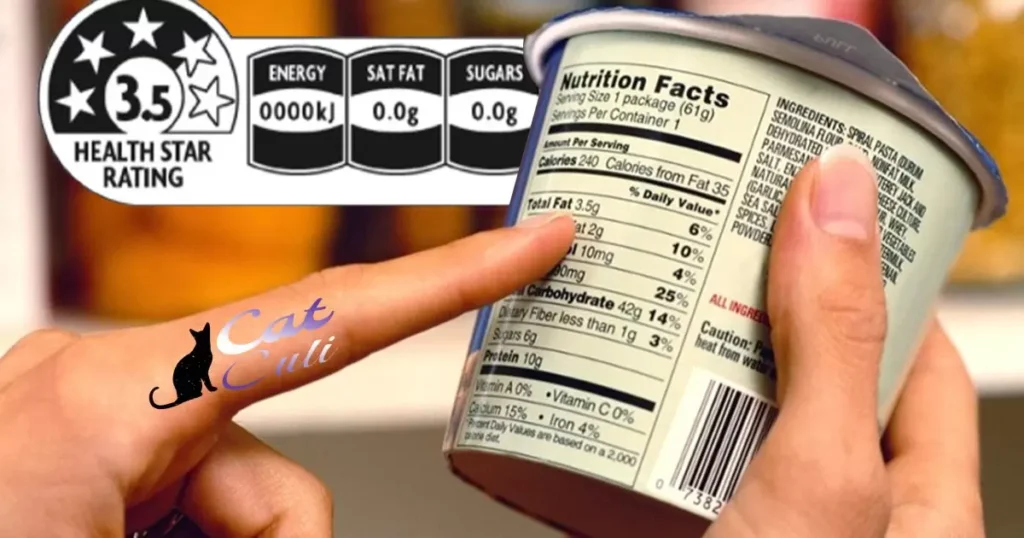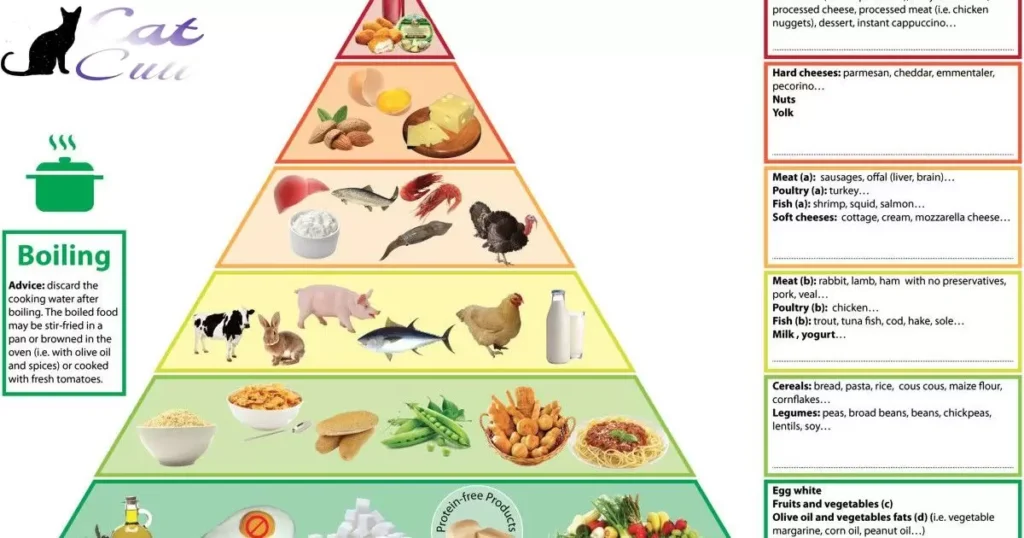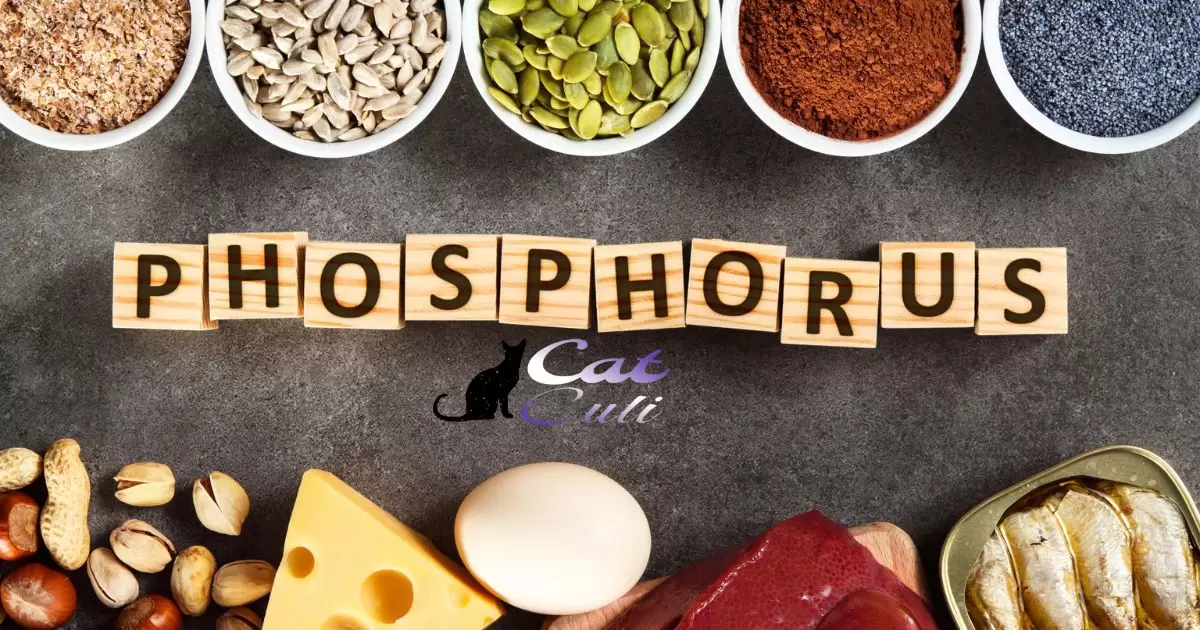Phosphorus in cat food is a crucial mineral that supports feline health by promoting bone and teeth formation, kidney function, and energy metabolism. However, maintaining an appropriate balance of phosphorus is essential, as excessive levels can lead to health issues such as kidney problems in cats.
Curious about your cat’s nutritional needs? Unlock the secret to feline well-being by learning How To Calculate Phosphorus In Cat Food. Discover the power of maintaining a balanced diet tailored to your cat’s unique requirements. Take charge of your cat’s health today – it all begins with understanding the importance of phosphorus in their food!
To determine phosphorus levels in cat food, check the product’s guaranteed analysis label for the phosphorus percentage. Use this information to calculate the daily intake based on your cat’s weight and dietary needs, ensuring a balanced and healthy diet.
Low Phosphorus Wet Cat Food Chart
Choosing the right cat food is crucial for your pet’s health. The Low Phosphorus Wet Cat Food Chart simplifies this task by providing a clear overview of phosphorus levels in various cat food brands. You can easily compare options, ensuring you select a suitable, low-phosphorus option to support your cat’s kidney health.
This chart acts as a valuable resource for cat owners facing the challenge of managing phosphorus intake. With its user-friendly format, it enables informed decisions, promoting the well-being of your feline companion.
Importance of Phosphorus for Cats
- Bone Health: Phosphorus is vital for cats as it plays a crucial role in maintaining strong and healthy bones. Adequate phosphorus levels contribute to bone development and overall skeletal strength in felines.
- Energy Metabolism: Phosphorus is a key component in the production of ATP, the primary energy currency in cells. Cats require phosphorus for efficient energy metabolism, helping them stay active and vibrant.
- Cellular Function: The importance of phosphorus extends to cellular function. It is involved in various cellular processes, including DNA synthesis and repair, ensuring the proper functioning of a cat’s body at the molecular level.
- Kidney Function: Proper phosphorus levels are essential for maintaining kidney health in cats. Imbalances can lead to kidney issues, emphasizing the significance of monitoring phosphorus intake to prevent renal problems.
- Nutrient Balance: Phosphorus works in harmony with other essential nutrients like calcium, contributing to a balanced diet for cats. Achieving the right balance is essential for overall health, emphasizing the importance of considering phosphorus in feline nutrition.
Understanding Cat Nutrition Requirements
Cats need a balanced diet to stay healthy. Their nutrition requirements include proteins, fats, vitamins, and minerals. Feeding them a well-rounded diet supports their overall well-being.
To ensure your cat gets the right nutrients, choose cat food with high-quality ingredients. Consult your veterinarian for personalized advice on meeting your cat’s specific nutritional needs. Understanding and meeting these requirements will contribute to your cat’s long-term health and happiness.
Sources of Phosphorus in Cat Food
Cat food contains phosphorus from various sources. Meats like chicken and fish contribute to phosphorus levels. Additionally, grains and supplements are common sources of phosphorus in cat food.
Monitoring phosphorus in cat food is crucial, as excess intake poses health risks. This awareness empowers pet owners to make informed choices, ensuring balanced nutrition. Additionally, considering if cat food is good for chickens expands insights into diverse dietary possibilities.
Recommended Phosphorus Levels for Cats
Cats need an appropriate amount of phosphorus in their diet for optimal health. Experts recommend a phosphorus level between 0.5% and 1.5% in cat food. Adequate phosphorus intake supports bone health and overall well-being in felines.
High phosphorus levels can lead to health issues, such as kidney problems. It’s crucial for cat owners to choose cat food with the right phosphorus balance to ensure their furry companions maintain a healthy and balanced diet.
Reading Cat Food Labels for Phosphorus Content

Understanding cat food labels is crucial for monitoring phosphorus content. Check the packaging for clear information on phosphorus levels to maintain your cat’s kidney health. Make informed choices by selecting foods with appropriate phosphorus levels to support your feline companion’s well-being.
Reading cat food labels becomes easier with a focus on phosphorus content. Look for labels that explicitly state phosphorus levels, helping you make healthier choices for your cat. Being proactive in choosing the right cat food ensures a balanced diet and supports your pet’s overall health.
How To Calculate Phosphorus In Cat Food Pdf
To calculate phosphorus in cat food, first, gather the nutritional information from the cat food packaging. Look for the phosphorus content listed in grams per serving. Next, determine the serving size that corresponds to the cat’s daily intake.
Once you have this information, multiply the phosphorus content per serving by the number of servings your cat consumes daily. This simple calculation will give you the total daily phosphorus intake from the cat food. Keep in mind that maintaining the right phosphorus levels is crucial for your cat’s overall health, so consult with your veterinarian to ensure proper nutrition.
Factors Affecting Phosphorus Absorption in Cats
Cats absorb phosphorus from their diet, and several factors influence this process. The type of food they consume plays a crucial role, as phosphorus availability varies between different sources. Additionally, the age and health status of the cat can impact phosphorus absorption, with kittens and senior cats having different needs.
The digestive health of a cat is pivotal in phosphorus absorption. A well-functioning digestive system ensures efficient utilization of phosphorus from the diet. In summary, understanding these factors helps pet owners make informed choices about their cat’s diet, ensuring optimal phosphorus absorption for overall feline health.
Consequences of Phosphorus Imbalance in Cat Diet
A cat’s diet must have the right balance of phosphorus for optimal health. When there’s too much phosphorus, it can lead to kidney issues, causing discomfort and affecting the cat’s overall well-being. On the flip side, insufficient phosphorus may hinder bone development, resulting in frailty and weakness in your feline friend.
Ensuring the correct phosphorus levels in your cat’s diet is crucial for preventing these problems. Regular veterinary check-ups and a balanced diet can help maintain the right phosphorus balance, keeping your cat happy and healthy.
Tools and Equipment for Phosphorus Calculation
To calculate phosphorus levels effectively, utilize essential tools and equipment. Employ a reliable phosphorus test kit to measure concentrations accurately. This kit ensures precision in determining the phosphorus content, enabling efficient nutrient management in various applications.
Equip yourself with a digital pH meter for added precision in phosphorus calculations. This tool simplifies the process, allowing for quick and accurate readings. By combining these tools and equipment, you can streamline phosphorus calculations, facilitating informed decisions for optimal resource utilization in agriculture or water treatment.
Step-by-Step Guide to Calculating Phosphorus in Cat Food
Below is a simplified table outlining key steps in the process of calculating phosphorus content in cat food:
| Step | Description |
| 1 | Collect Necessary Data |
| 2 | Identify Phosphorus Sources in Cat Food |
| 3 | Weigh Cat Food Samples |
| 4 | Choose Appropriate Analytical Method |
| 5 | Prepare Samples for Analysis |
| 6 | Perform Phosphorus Analysis |
| 7 | Record and Interpret Results |
| 8 | Calculate Phosphorus Content per Unit of Cat Food |
| 9 | Consider Biological Availability of Phosphorus |
| 10 | Adjust Diet or Supplement as Needed |
| 11 | Document the Calculations and Adjustments |
| 12 | Monitor Phosphorus Levels Over Time |
This table provides a step-by-step guide for efficiently calculating phosphorus content in cat food, offering a structured approach to ensure accuracy in the process.
Adjusting Cat Diet to Meet Phosphorus Requirements

To ensure your cat’s health, adjust its diet to meet phosphorus requirements. Cats need a balanced diet with adequate phosphorus levels for proper bone and kidney function. Choose cat food with the right phosphorus content to keep your feline friend happy and healthy.
Consider consulting your veterinarian for guidance on adjusting your cat’s diet. They can recommend specific cat food brands or supplements to maintain optimal phosphorus levels. Taking proactive steps in adjusting your cat’s diet will contribute to its overall well-being and longevity.
Common Pitfalls in Phosphorus Calculation
- Neglecting Individual Needs: One common pitfall in phosphorus calculation is overlooking individual factors. Cats, for example, have different phosphorus requirements than dogs. Tailor your calculations to the specific needs of the animal to avoid nutrient imbalances.
- Ignoring Treats and Supplements: Calculations often go awry when people forget to account for treats and supplements. These extras can significantly impact the overall phosphorus intake, leading to an imbalance. Be meticulous in considering all elements of your pet’s diet.
- Incomplete Food Label Analysis: Relying solely on a food’s general phosphorus content can be misleading. Always check the complete ingredient list and the quality of phosphorus sources. Some ingredients may have different phosphorus bioavailability, affecting the accuracy of your calculations.
- Forgetting Health Conditions: Health conditions can alter phosphorus requirements. Chronic kidney disease, for instance, may necessitate a lower phosphorus intake. Be aware of your pet’s health status and adjust calculations accordingly to prevent potential health issues.
- Not Regularly Reassessing: Pets’ needs change over time, especially with age or health fluctuations. Failing to regularly reassess and adjust phosphorus calculations can result in an outdated diet plan. Stay vigilant and update your calculations periodically to ensure continued nutritional balance.
Consulting with a Veterinarian for Nutritional Advice
When seeking nutritional advice for your pet, consult with a veterinarian. Veterinarians possess the expertise to guide you on the best diet for your furry friend. They can recommend specific foods and portions tailored to your pet’s unique needs, ensuring they stay healthy and happy.
During a consultation, veterinarians assess your pet’s overall health and lifestyle. Based on this evaluation, they provide practical and actionable nutritional advice. This direct approach ensures that you receive clear and personalized guidance to support your pet’s well-being. Consulting with a veterinarian ensures that your pet receives the best nutrition for a vibrant and thriving life.
Monitoring and Adjusting Phosphorus Intake Over Time
To maintain a healthy diet, it’s crucial to monitor and adjust your phosphorus intake over time. Consuming too much phosphorus can lead to health issues, such as kidney problems. Keep an eye on food labels, choose low-phosphorus alternatives, and consult with a nutritionist for personalized guidance.
Balancing phosphorus intake is especially important for individuals with kidney concerns. Regularly assessing your diet and making mindful choices empowers you to manage your phosphorus levels effectively, promoting overall well-being.
How To Calculate Phosphorus In Cat Food For Kidney Disease
To calculate phosphorus in cat food for kidney disease, first, check the product’s nutritional information. Look for the phosphorus content per serving. Use a simple formula: Multiply the phosphorus amount by the serving size to get the total phosphorus per serving.
Keep in mind your cat’s dietary restrictions; aim for a low-phosphorus diet to support kidney health. Regularly monitoring and adjusting phosphorus intake helps manage the progression of kidney disease in cats, promoting their overall well-being.
Homemade Cat Food and Phosphorus Considerations
Making your own cat food at home ensures your feline friend gets a nutritious meal. Choose quality ingredients like lean meats, vegetables, and grains to create a balanced diet. Keep in mind the phosphorus levels in the ingredients, as excessive phosphorus can be harmful to your cat’s kidneys.
When preparing homemade cat food, focus on providing a variety of protein sources such as chicken or fish. Monitor phosphorus levels by selecting low-phosphorus ingredients like turkey and avoiding high-phosphorus additives. By crafting a thoughtful homemade cat food recipe, you can promote your pet’s well-being and tailor their diet to specific health needs.
Commercial Cat Food Options with Optimal Phosphorus Levels
Choosing the right cat food is crucial for your pet’s health. Look for commercial options that maintain optimal phosphorus levels to support your cat’s kidney function. These foods promote overall well-being and help prevent potential health issues in your feline friend.
Explore various brands offering balanced phosphorus content. Check labels for transparency and ensure your cat’s diet aligns with their specific needs. By selecting cat food with optimal phosphorus levels, you contribute to your pet’s longevity and happiness.
Case Studies: Balancing Phosphorus in Cat Diets
Balancing phosphorus in cat diets is crucial for their overall health. Cat owners need to carefully consider the phosphorus levels in their pet’s food to prevent potential issues. Case studies reveal the importance of maintaining an appropriate phosphorus balance to support feline well-being.
Researchers have explored various approaches to achieve optimal phosphorus levels in cat diets. These case studies emphasize the significance of selecting cat foods with controlled phosphorus content to promote a healthy and balanced nutritional intake. Pet owners play a pivotal role in ensuring their cats receive the right amount of phosphorus for a happy and thriving feline companion.
Ensuring Overall Nutritional Balance for Cats
Cats need a well-balanced diet to stay healthy. Owners must provide a mix of proteins, fats, and carbohydrates in their cat’s meals. Regularly feeding a variety of high-quality cat food ensures their overall nutritional needs are met.
Owners can also incorporate treats and supplements, but moderation is key. Additionally, consulting with a veterinarian helps tailor the diet to the cat’s specific health requirements. By actively managing their feline friend’s nutrition, owners contribute to their cat’s well-being and longevity.
Cat Food Phosphorus Chart

The Cat Food Phosphorus Chart is a helpful tool for cat owners. It shows the phosphorus content in various cat food brands, aiding in selecting the right one for a cat’s health. Monitoring phosphorus intake is crucial for cats with kidney issues, and this chart simplifies the process.
By using the Cat Food Phosphorus Chart, cat owners can make informed decisions about their pet’s diet. It provides a clear overview, making it easy to compare and choose cat foods that align with a cat’s specific nutritional needs. Overall, this chart is a valuable resource for promoting the well-being of our feline friends.
Low Phosphorus Dry Cat Food Chart
Choosing the right cat food is crucial for your pet’s health. The Low Phosphorus Dry Cat Food Chart helps you identify options that support kidney function in cats. It simplifies decision-making by listing phosphorus levels in popular dry cat food brands, aiding in the selection of a suitable diet for feline friends with specific dietary needs.
Monitoring phosphorus intake is essential for cats with kidney issues. The Low Phosphorus Dry Cat Food Chart acts as a handy tool, empowering cat owners to make informed choices for their pets’ well-being. With this resource, you can easily find cat food options that align with your furry friend’s health requirements, promoting a happy and healthy life.
Frequently Asked Question
How do I know how much phosphorus is in my cat food?
To determine phosphorus levels in cat food, check the product’s nutritional information on the packaging. Look for the phosphorus content listed in the guaranteed analysis section to ensure you make an informed decision about your cat’s diet.
How can you tell how much phosphorus is in food?
To determine phosphorus content in food, check the nutrition label for phosphorus content per serving. Additionally, online databases or apps can provide detailed information about phosphorus levels in various foods.
What is normal phosphorus level in cats?
The normal phosphorus level in cats typically ranges between 2.5 to 6.0 mg/dL. Monitoring and maintaining this range is essential for feline kidney health.
How much phosphorus is allowed on a renal diet for cats?
In a renal diet for cats, the allowed phosphorus intake typically ranges from 0.3% to 0.6%, aiming to support kidney health by managing phosphorus levels in their diet.
Conclusion
Determining the phosphorus content in cat food is crucial for maintaining feline health. By following the simple steps outlined in this guide, cat owners can confidently calculate phosphorus levels in their pet’s diet, ensuring a balanced and nutritious meal.
Consistent monitoring of phosphorus intake is essential for promoting the overall well-being and longevity of our feline companions. As responsible caregivers, staying informed about phosphorus content empowers us to make informed choices that contribute to the optimal health of our beloved cats.








